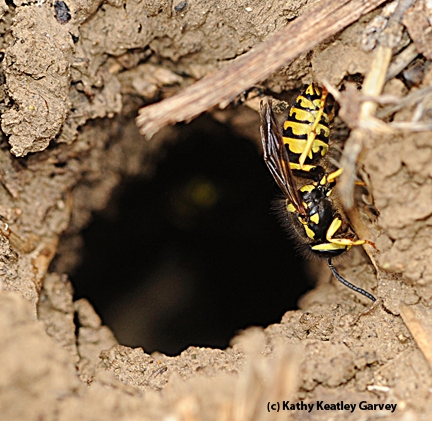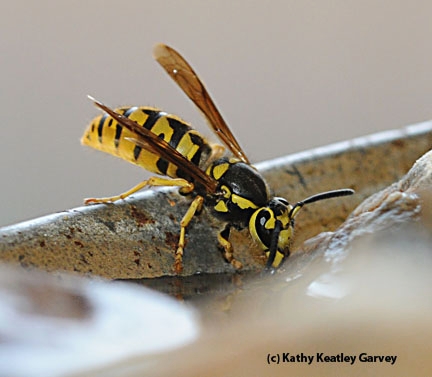The question begged for an answer.
"It's yellowjacket time again. Does anyone have or recommend a good trap?"
A Bay Area beekeeper today sought recommendations from ledEric Mussen, Extension apiculturist with the UC Davis Department of Entomology and Nematology.
Mussen, who recently co-authored "Yellowjackets and Other Social Pests" on the UC IPM website with Michael Rust of UC Riverside, responded candidly.
"There are a number of ways that people try to deal with populations of yellowjackets at this time of year," he told her.
- If you can find the nesting area, a whole colony can be dealt with, directly.
- If you can’t find the nest, then most people resort to trapping, since putting out poisonous baits no longer is legal. You can purchase the yellow plastic traps at hardware and nursery stores, etc. You can catch quite a substantial number of wasps, but that often does not alleviate the problem. Similar traps in the spring, to intercept the foundresses, accomplishes a lot more in the long run. These traps contain a pheromone that attracts the wasps. Put the traps a good distance away from where you hope to have a wasp-free location.
- In many outdoor areas, people will tie a piece of raw meat suspended over a tub of detergent water. The wasps come and gorge themselves, then tumble into the water and drown. Again, this does not mean that you will get them all and no longer be vexed. Also, you may have to deal with other scavengers that will eat old meat.
- If the wasps are going after your bees, this is a good time to put “robbing screens” on the entrances to your hives. They pretty much stop honey bee robbing and they are helpful with wasp problems, too, where the wasp populations are not too high. You can see my idea of a good design at my Bee Briefs on our Entomology website. See Robbing Screen.
Western Yellowjackets (Vespula pensylvanica) like to hang around or nest near apiaries because it's "one-stop shopping," as former UC Davis postdoctoral scholar Erin Wilson, now an assistant professor of entomology at UC Riverside, said at a UC Davis seminar in December 2010.
Yellowjackets prey on honey bees. They raid the hives (killing the adults and brood, and stealing honey) and take the food back to their young.
Yes, it's that time again when beekeepers figuratively "see red" when they see yellow (jackets).
Attached Images:

